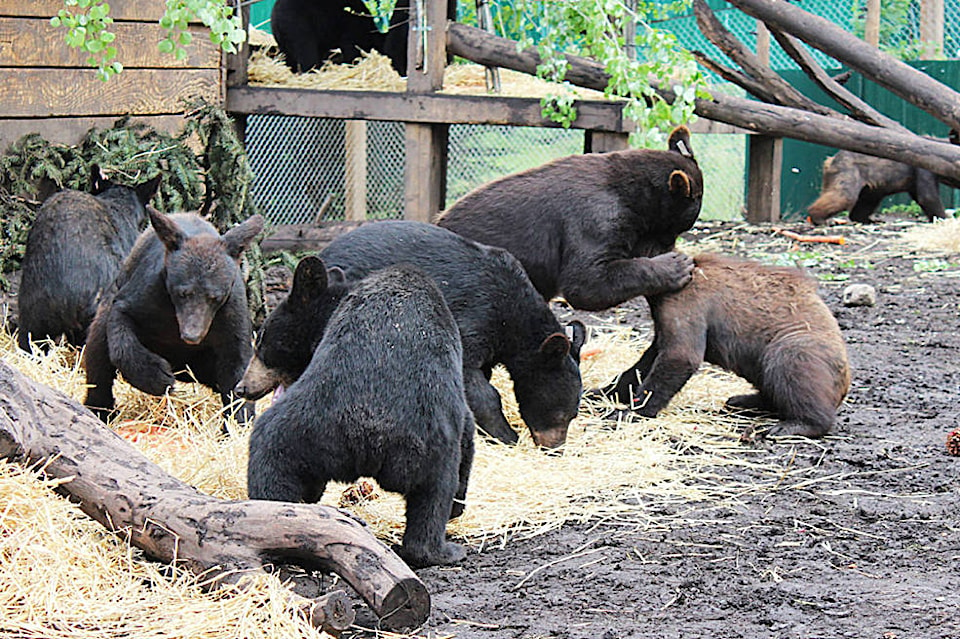The Northern Lights Wildlife Shelter (NLWS) in Smithers, is dealing with an unusually large number of orphan bears this summer and is looking for food donations to help feed them.
Angelika Langen, co-founder of the rescue organization said they are currently caring for 18 black bear cubs and two grizzlies.
“It’s a high number for this time of year,” she said. “What we’ve been asking for is, this is the apple time and fruit and vegetables, so if gardeners and people have surplus then that really helps us feeding the bears and getting them ready for hibernation.”
The shelter has capacity to take in a little more than 60 bears, but usually the busy time is later in the season.
“Typically at this time of year we have six or eight black bears and grizzlies don’t usually come until the fall, so everything was a bit early,” Langen said.
“We’re holding our breath now and wondering what the fall might bring; it could get pretty crazy then, but at the moment we’re still good.”
They do need food, though.
PHOTO GALLERY: Ninth Annual Northern Lights Wildlife Society open house
In a Facebook post, NLWS explained they are looking for all kinds of fruits and vegetables, which can be slightly bruised, but not rotten.
The food must be boxed and dropped off at Bandstra Transportation, between 8 am and noon, the company delivers it to the shelter free of charge from Burns Lake.
They will also take raw meat and fish (even if freezer burnt), but nothing cooked, smoked or spiced.
Langen said the increased intake this year may be due to a couple of reasons.
“There were a number of animals that were twins or triplets, so that of course, brings the number up really quickly,” she said.
“Also, more people know about us, we have a really good working relationship with the conservation officers, so everything is coming together, that brings more animals into rescue than before.”
